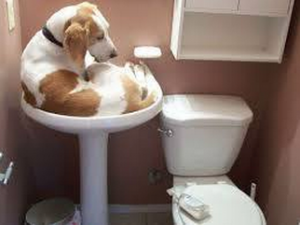The month of September is National Preparedness Month, which means that it’s the perfect time to think about enacting a plan for your furry friends in the event of an emergency. You’ve made the decision to invite your pets into your family unit, so it’s important to keep them safe and secure at all times. Emergencies come in many shapes and sizes, and they might require permanent evacuation from your home. The best thing you can do for your family is to be prepared. In order to avoid making last-minute, rash decisions in the wake of a disaster, follow these emergency preparedness tips:
Ensure that your pet has proper identification.
When your pet’s identification is up to date, he or she is more likely to be returned safely home when lost. Important information such as the owner’s name, email address, home address and phone number will give your pet the best chance of being reunited with your family. Since collars and tags can fall off, take extra precaution and insert a microchip underneath your pet’s skin, taking care to keep the linked personal information updated.
Come up with a list of a few possible safe havens.
Do not consider leaving your pets behind in the event of an emergency. They run the risk of being exposed to life-threatening hazards. Sit down with your family and determine what your best options are if you have to find a safe location to drop off your pets. You can choose to contact your veterinarian for a list of preferred boarding facilities, and find out if your local animal shelter provides emergency boarding for pets. Also, make a list of hotels and motels in your area that accept pets. Lastly, it’s important to identify a few friends and family members that would be willing to take in your beloved animals in the event that you have to evacuate your home.
Put together an emergency supplies kit with your pet in mind.
Your kit should be easily identified and carried. You should purchase:
- a pet first aid kit
- a week’s worth of dry and pop-top canned wet food
- paper towels and disposable garbage bags
- disinfectant
- feeding dishes
- extra collar or harness and leash
- photocopies of medical records
- a water-proof bag with any medications your pet takes
- bottled water
- flashlight
- blanket for wrapping up anxious pets
Location, Location, Location.
Consider the home in which you live, and determine its safest rooms. They should be clear of hazards such as windows and flying debris. A basement is ideal. The room should also be easy to clean. Notably, you should consider identifying the places that your pet chooses as hiding spots during stressful situations. It might be under a bed, in a closet or in the corner of a storage area. In the event that you need to quickly gather your pets, knowing exactly where they choose to hide when they are scared will be a huge advantage when it comes to moving quickly.




